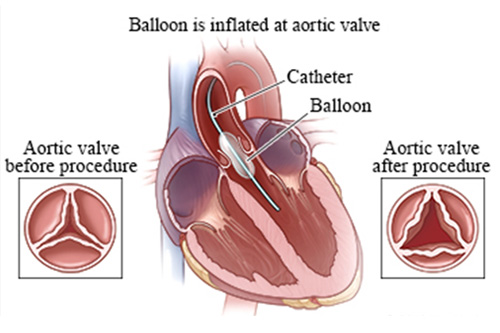Balloon Mitral Valvotomy (BMV) successfully opens the narrowed valve and improves the overall function of the heart. Balloon Mitral Valvotomy (BMV) is used foe:
• Select patients who have mitral valve stenosis with symptoms
• Older patients who have aortic valve stenosis, but are not able to undergo surgery
• Some patients with pulmonic valve stenosis
• BMV procedure can be performed on the mitral, tricuspid, aortic or pulmonary valves.
How is BMV performed?
Long, slender tubes called catheters are first placed into blood vessels in the groin and guided into the chambers of the heart. The cardiologist then creates a tiny hole in the wall between the upper 2 chambers of the heart. This hole provides an opening for the cardiologist to access the left atrium with a special catheter that has a balloon at the tip. The catheter is positioned so the balloon tip is directly put inside the narrowed valve. The balloon is inflated and deflated several times to widen the valve opening. Once the cardiologist has determined that the opening of the valve has been widened enough, the balloon is deflated and removed. During the procedure, the cardiologist may perform an echocardiogram (ultrasound of the heart) to get a better picture of the mitral valve.
- Most patients will need to have blood tests, chest X-ray, and echocardiogram before the procedure. These tests are usually scheduled the day before the BMV.
- Ask your doctor what medications should be taken on the day of your procedure.
- You will not be able to eat or drink after midnight the evening before the procedure.
- Tell us if you have any kind of allergies.

